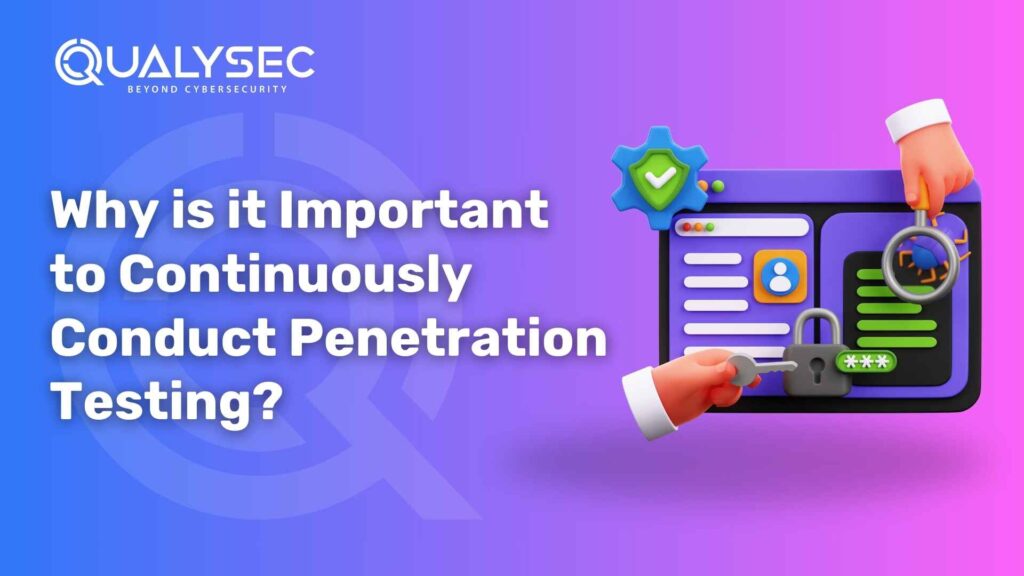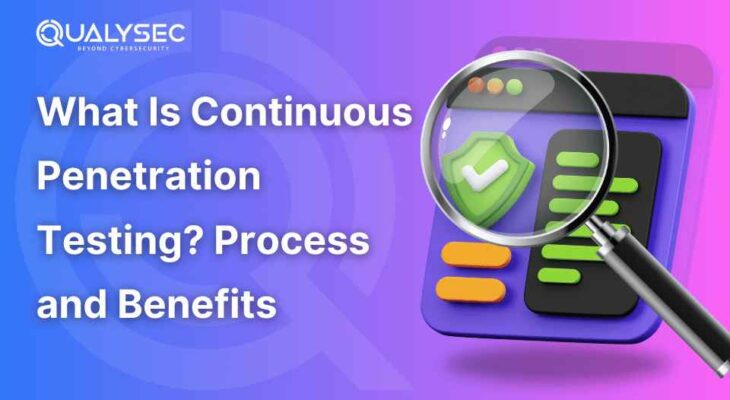Why is it Important to Continuously Conduct Penetration Testing for a Strong Security System?
Cybersecurity threats are evolving in step with technology. To stay ahead, organizations need to proactively secure their code and implement dynamic protection solutions. Continuous security testing, including continuous penetration testing (CPT), is a proactive measure that helps in this endeavor. Our focus in this blog is on the pivotal role of penetration testing services in modern cybersecurity. We will delve into the significance of continuous penetration testing, a key strategy for maintaining a high level of security for a system or application. We’ll also cover the processes, advantages, and best practices for effectively implementing continuous penetration testing. Understanding the Concept of Security Penetration Testing Penetration testing (also referred to as ethical hacking) is a necessary security practice that assesses applications, cloud systems, network infrastructure, and more to identify potential business-critical vulnerabilities that cyberattacks may leverage. This approach’s uniqueness and greatest value is the simulation of an actual cyberattack to identify vulnerabilities or weaknesses that an attacker could exploit. It allows you to identify vulnerabilities and remediate them before cybercriminals abuse them. Statistics confirm the need and significance of penetration testing. The global penetration testing market will be worth $1.7 billion in 2024. According to experts, it is expected to reach $3.9 billion by 2029 (with a CAGR of 17.1%). Security Testing Methodologies Now, let’s look at the primary security testing or pentesting methods. Black box testing. Here, the tester operates without any initial knowledge of the target system. This method precisely imitates cyberattacks. It is refined for the detection of vulnerabilities without inside information. White box testing. In this scenario, the target system’s complete information is accessible to the tester. This may encompass architecture, credentials, and even source code. Here, the prime intention is to provide complete coverage of the security aspects of the system. Gray box testing. It’s a compromise between the above two approaches. The testers don’t have much information about the target system. Here, they create a situation as if the attackers have a basic idea about the system and its elements. Why is Continuous Security Testing Important? Identifying vulnerabilities One of the key reasons why security penetration testing is crucial is its ability to identify vulnerabilities and address them promptly. This proactive approach allows for continuous monitoring of your system and network, enabling you to respond to and contain potential incidents before they escalate into full-blown attacks. How does it work? Finding weaknesses with penetration testing differs slightly from vulnerability assessment and scanning techniques. Automated tools may be suitable for scanning your system periodically for prevalent vulnerabilities. On the other hand, CPT seeks to discover probable security vulnerabilities that are difficult to find by minimizing false positives and relying on manual interaction with the system. Mitigating risks CPT allows both of you to recognize vulnerabilities and classify security threats appropriately. Why is it so important? That way, you can maximize resource allocation and enhance cybersecurity controls. Indeed, pen testing gives you a grasp of the monetary impact of an attack, the threats to your infrastructure, and how to best manage them. Therefore, why is it necessary to perform penetration testing regularly? Mimicking real-life attack situations exposes key vulnerabilities and weaknesses that otherwise may not be evident. In this way, you can better prioritize security measures and properly manage investment decisions for new security tools and protocols. Enhancing incident response This is yet another reason why penetration testing is crucial. It plays a significant role in enhancing incident response, providing the following benefits: Compliance assurance Why must we perform penetration testing to maintain a good security stance? Because CPT is an essential service that ensures compliance. If you are employed in regulated industries, you know that compliance with industry frameworks is of utmost importance. Pentesting is a forward-looking method that gives you clear knowledge regarding possible gaps in compliance, making you feel secure and compliant. How does it function? Testers continuously evaluate the degree of security and locate areas to be improved. This, therefore, enables you to stay compliant with regulations like HIPAA, PCI DSS, GDPR, and NIST 800-53. Why Is Penetration Testing Important for Cost Savings and ROI Below are some essential facts that will enable you to grasp how CPT can save you money. Pentesting has an intricate nature. It utilizes vulnerabilities actively to test the strength of security and find potential points of entry through which an intruder can penetrate the system. This includes deeper evaluation and delving into weaknesses. In doing this, pentesters attempt to access sensitive information, breach the system, etc. All these combined enable you to evaluate the possible effect of an attack, enhance your security controls, and pre-empt the expenditures associated with addressing the repercussions. It also reduces the risk of expensive security breaches, enhances security stance, and lowers operational expenses. Historical testing may not reveal security threats that exist today. The CPT, however, gives you a real-time view of security performance via ongoing indicators and reports. With the information you gain, you can refine the distribution of resources and measure the return on your security investments to ensure long-term success. Penetration testing + vulnerability assessment Penetration testing mimics cyber attacks to measure information security. It employs automated tools and manual methods to try to hack key systems. On the other hand, compared to a penetration test, a vulnerability assessment quantifies and identifies prevalent security vulnerabilities within an environment and is geared towards a high-level view of your posture for security. It is part of the vulnerability management program. Also, ongoing security testing takes advantage of vulnerabilities to determine defense effectiveness. Vulnerability assessment, however, concentrates on leveraging preconfigured payloads to detect vulnerabilities without actually exploiting them. Why are both needed? Because they complement one another. Experts use both to create strong security management systems and implement them on an ongoing basis. Automated + manual processes Merging automation with traditional manual testing techniques is a good practice to offer complete security coverage. Automated tools like vulnerability scanners and network monitoring systems provide real-time insights into threats. They make it more





